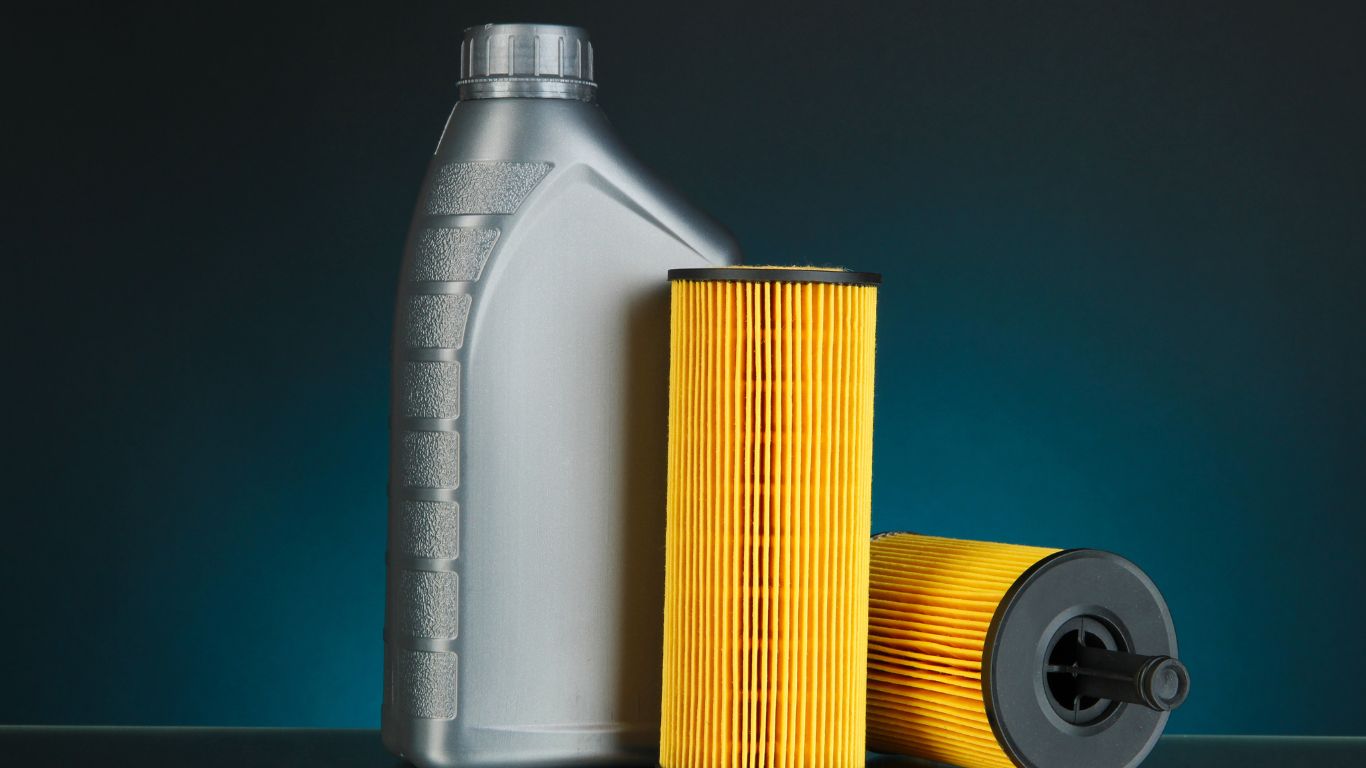If you’re a motorcycle enthusiast like me, you understand the thrill of hitting the open road, feeling the wind against your body, and the adrenaline rush that comes with it. But with great rides come great responsibilities: maintaining your bike’s health. One crucial aspect of this maintenance involves oil changes. So, how often do motorcycles need oil changes?
It’s a common question among bike riders. And the answer? Well, it depends on a few different factors.
“To maintain the optimal performance of your motorcycle, oil changes are crucial.”
Generally, the rule of thumb is to change your motorcycle’s oil every 2,000 miles. However, what if you’re using synthetic oil? Or what if your bike is older? Here’s a breakdown:
| Motorcycle Type | Oil Type | Oil Change Frequency |
|---|---|---|
| Newer motorcycles | Conventional oil | Every 2,000 miles |
| Newer motorcycles | Synthetic oil | Every 7,000 miles |
| Older motorcycles | Conventional or synthetic oil | Every 1,000 miles |
Let’s not forget, my friend, that these are merely guidelines to steer us in the right direction.
A variety of factors can influence how frequently you need to change your bike’s oil. Factors such as your driving style, the climate in which you live, and the specific design of your motorcycle’s engine all come into play.
- Driving Style: If you often ride at high speeds, your bike may need more frequent oil changes.
- Climate: In extremely hot or cold climates, you might need to change the oil more often.
- Engine Design: Some engines require more frequent maintenance than others.
Remember, while these are general guidelines, it’s always best to consult your motorcycle’s owner’s manual for the most accurate information. So, keep your engine purring and your wheels rolling smoothly by keeping up with regular oil changes, because maintaining your bike is just as vital as the ride itself!
Importance of Regular Oil Changes for Your Motorcycle
There’s a pervading sense of joy and freedom that comes with owning a motorcycle. The wind in your hair, the open road ahead, and the thrilling hum of the engine beneath you. But with this joy comes responsibility, the paramount one being the maintenance of your beloved two-wheeler. And when we talk about maintenance, one aspect that often takes center stage is oil changes.
“Regular oil changes are the lifeblood of your motorcycle’s engine.”
Did you know that oil is like the lifeblood of your motorcycle? It really wears many hats in keeping your motorcycle running smoothly.
It not only lubricates the moving parts to reduce friction but also cleans, cools, and protects the engine from wear and corrosion. However, with time and use, the oil starts to degrade and its efficiency decreases, which could lead to engine damage if not addressed on time.
How Often Should You Change the Motorcycle Oil?
Now the pressing question that arises is – how often should we change the motorcycle oil? The answer isn’t as simple as one might think and depends on several factors such as the type of motorcycle, the oil used, and the riding conditions.
- Type of motorcycle: Different motorcycles have different engine specifications and therefore require oil changes at different intervals. For instance, a high-performance sports bike might need more frequent oil changes compared to a standard commuter bike.
- Type of oil: The type of oil used – synthetic or mineral, also influences the frequency of oil changes. Synthetic oil tends to last longer than mineral oil and thus requires less frequent changes.
- Riding conditions: If you often ride in harsh conditions like dusty roads or extreme temperatures, your motorcycle might need more frequent oil changes.
While these factors play a role, a general guideline recommended by most motorcycle manufacturers is to change the oil every 2000 to 3000 miles or every 6 months, whichever comes first.
Importance of Regular Oil Changes
Regular oil changes not only prolong the life of your engine but also ensure that your motorcycle stays in optimal running condition. This can result in better fuel efficiency, smoother rides, and ultimately, a more joyful riding experience.
“An engine without regular oil changes is like a heart without a regular check-up – both are essential for smooth and efficient operation.”
So, fellow riders, while the open road calls and the thrill of the ride beckons, let’s not forget the importance of regular oil changes for our faithful metal steeds. In the grand scheme of things, it’s a small price to pay for the countless miles of joy and freedom they provide.
How Often Should You Change the Oil in Your Motorcycle?
Motorcycle enthusiasts often ask a very valid question: “How often should I change my motorcycle oil?” Well, the answer is not as straightforward as you might think. Multiple factors come into play, affecting the frequency of oil changes.
Ready to explore motorcycle maintenance? Let’s get started!
“An oil change is not just about replacing old oil with new. It’s about ensuring the longevity and optimal performance of your beloved motorcycle.”
On average, the accepted norm is to change the motorcycle oil every 3,000 miles or every six months, whichever comes first. However, this is a generalized recommendation, and the actual frequency can vary depending on the following factors:
- Type of motorcycle
- Your riding style
- The quality of the oil
- The condition of the motorcycle
For instance, high-performance motorcycles or those frequently used for long-distance travel may require more frequent oil changes. If you’re a high-speed or aggressive rider, the oil tends to break down faster, necessitating more regular changes. On the flip side, if your motorcycle is mostly sitting idle or used for short commutes, you might be able to go longer between oil changes.
The Importance of Regular Oil Changes
Ever found yourself pondering why those frequent oil changes are such a big deal? Let me enlighten you. The oil in your trusty motorcycle isn’t just there to fill space, oh no. It has three absolutely vital roles to play:
- Lubrication
- Heat Dissipation
- Cleaning
Over time, the oil’s effectiveness in performing these functions decreases. This is due to the accumulation of contaminants and the breakdown of the oil itself. Regularly changing the oil ensures your motorcycle engine stays lubricated, cool, and clean, thereby extending its life.
| Factors | Frequency of Oil Change |
|---|---|
| Type of Motorcycle | Varies |
| Riding Style | Varies |
| Quality of Oil | Varies |
| Condition of Motorcycle | Varies |
In conclusion, while the generally accepted norm for changing motorcycle oil is every 3,000 miles or six months, your specific circumstances might require more or less frequent changes. It’s always a good idea to consult your motorcycle’s manual or a trusted mechanic for personalized advice.
Remember, regular oil changes are a smart investment in your motorcycle’s longevity and health. It’s like regularly giving your bike essential medicine.
Factors That Affect the Frequency of Oil Changes for Motorcycles
Just as the human body relies on blood to function optimally, your precious motorcycle depends on oil for smooth and efficient operation. There are numerous factors that can affect how frequently you change your oil, and each one gives the story its own unique twist. So, how often do motorcycles need oil changes? Let’s dive in!
1. The Type of Motorcycle
The type of bike you own plays a significant role in determining the frequency of oil changes. A sportbike, for example, may require more frequent oil changes due to its high-revving nature, whereas a cruiser might require less frequent oil changes.
2. The Type of Oil
Another important consideration is the type of oil you use. Synthetic oil generally lasts longer than conventional oil, so if you’re using synthetic oil, you may be able to extend the intervals between oil changes.
3. Riding Conditions
Your riding conditions also have a significant impact. If you ride in harsh conditions, such as in heavy traffic, high temperatures, or on dirt roads, your oil may degrade more quickly.
4. Riding Frequency
How often you ride your motorcycle can also affect the oil change frequency. Riding your bike frequently can lead to faster oil degradation, necessitating more frequent oil changes.
5. Manufacturer’s Recommendations
Last, but certainly not least, always consider the manufacturer’s recommendations. These guidelines are designed specifically for your motorcycle model and should always be followed to ensure optimal performance and longevity.
After considering all these elements, you may find yourself asking, “So, what’s the ultimate takeaway here?
Curious about how frequently to change your motorcycle oil? Generally, it’s recommended to do so every 2000 to 3000 miles. However, this can vary based on individual bikes and riders. Always refer to your owner’s manual or seek advice from a professional mechanic for the most accurate information.
Remember, regular oil changes are a key component of motorcycle maintenance. So, stay on top of it and your beloved bike will thank you with years of trouble-free rides!
Signs That Your Motorcycle Needs an Oil Change
For a motorcycle lover, the thrill of the open road, wind, and engine sound is unmatched.
But even the most thrilling rides can be spoiled if your motorcycle isn’t performing at its best. One of the key factors in maintaining your motorcycle’s health is an oil change. But, how often do motorcycles need oil changes? It’s not always straightforward, and often depends on a variety of factors like the type of bike, its age, and how frequently you ride. However, there are tell-tale signs to look out for that may indicate your motorcycle is due for an oil change.
1. Dark and Dirty Oil
Typically, clean motorcycle oil should be a clear, amber color. As the oil is used and gets older, it starts turning dark and becomes dirty. If you notice that your oil has turned black or is filled with debris, it’s a clear sign that it’s time for an oil change. To check the oil, simply remove the dipstick, wipe it clean, reinsert it, then remove it again to check the color.
2. Increased Engine Noise
Motorcycle engines make noise – that’s a part of their charm. But if you start hearing excessive noise, it’s often a sign that the oil needs to be changed.
The oil lubricates the engine and reduces friction. When it ages and gets dirty, it becomes less effective, causing more noise.
3. Decreased Performance
If your motorcycle’s performance isn’t what it used to be, it could be a sign that the oil needs changing.
If you’re experiencing lag during acceleration, increased fuel consumption, or difficulties starting your bike, it could be due to old, dirty oil. Dirty oil can cause these inconveniences.
So, if you notice your motorcycle isn’t performing as well as it should, consider checking the oil.
4. Excessive Exhaust Smoke
While a certain amount of exhaust smoke is normal, particularly in cold weather, excessive smoke may indicate an oil problem. This could be due to oil leaking into the combustion chamber, often a sign that the oil needs to be changed.
5. Oil Level Drops Quickly
Another sign to watch out for is if the oil level drops quickly. While it’s normal for oil levels to drop slightly over time, a significant drop can indicate a problem. This could be due to a leak, or the oil being burned up because it’s old and ineffective.
Remember, different motorcycles may have different oil change schedules. Always check your owner’s manual to know the recommended oil change interval for your specific bike.
The importance of regular oil changes cannot be overstated.
This practice extends your motorcycle’s engine life and enhances your riding experience. It’s like renewing your bike’s life.
So, keep an eye on these signs and make sure your motorcycle is running on fresh, clean oil. Ride safe!
Choosing the Right Type of Oil for Your Motorcycle
If you’re a motorcycle enthusiast like me, you’d agree that nothing beats the thrilling feel of our machines on the open road. But, to keep this exhilarating experience alive, it’s important to care for our mean machines properly. Part of this care involves choosing the right motor oil. Just like you wouldn’t fuel a sports car with sub-par gasoline, your motorcycle also deserves the best oil you can afford.
Ready to explore motor oils? Let’s find the best for your bike.
Understanding Oil Viscosity
Before you can choose the right oil, you need to understand a little about oil viscosity. The iviscosityi of oil is a measure of its resistance to flow. High viscosity oils are thick and flow slowly, while low viscosity oils are thin and flow quickly. Your motorcycle’s engine requires a specific viscosity to run its best, usually indicated in the owner’s manual.
Types of Oil
- Mineral Oil: This is the most traditional type of oil, derived directly from crude oil. It’s the least expensive, but it also provides less protection and needs to be changed most frequently.
- Semi-Synthetic Oil: A blend of mineral and synthetic oil, this type offers a balance between cost and performance. It usually lasts longer than mineral oil before it needs to be changed.
- Synthetic Oil: Created in a lab, synthetic oil performs excellently at high temperatures and pressures. It lasts longer than both mineral and semi-synthetic oils, but it’s also the most expensive.
Selecting the appropriate oil can significantly enhance your motorcycle’s longevity and functionality. Consider it a worthwhile long-term investment!
Choosing the Right Oil for Your Motorcycle
You’ve got the knowledge, now it’s time to make a decision. Your owner’s manual will recommend a specific type of oil, but you have the freedom to choose a higher-quality oil if you wish. Consider your riding habits, the age and condition of your motorcycle, and the climate in your area.
| Type of Oil | Best for |
|---|---|
| Mineral Oil | Older motorcycles, moderate climates, short rides |
| Semi-Synthetic Oil | Most motorcycles, all climates, longer rides |
| Synthetic Oil | New, high-performance motorcycles, extreme climates, long rides |
At the end of the day, your motorcycle’s health and performance rest in your hands. Choose wisely, and your reward will be many miles of smooth, trouble-free riding. Enjoy the journey!
How to Change the Oil in Your Motorcycle
As an enthusiastic motorcyclist, I understand the thrill of the open road, the wind in your hair, and the roar of the engine beneath you. But let’s not forget that a well-maintained motorcycle is the key to many more exhilarating rides. And an integral part of this maintenance routine is changing your motorcycle’s oil. It’s a simple task, yet one that holds immense importance. So, how often should you change your motorcycle’s oil? Let’s delve into this.
Regular oil changes are imperative for the smooth running of your motorcycle. The oil in your motorcycle lubricates the engine’s moving parts, reducing friction and thereby preventing overheating. But over time, this oil breaks down and its lubricating properties diminish, putting your bike’s engine at risk. Hence, regular oil changes are important.
“Remember, a little bit of maintenance goes a long way in ensuring the longevity of your bike and in providing you with safe, enjoyable rides.”
- On average, it’s recommended that you change your motorcycle’s oil every 2,000 to 3,000 miles.
- However, this is a general guideline and the frequency of oil changes can depend on various factors like the make and model of your bike, the type of oil you use, and your riding style and conditions.
- If you ride your motorcycle in extreme conditions or use it for racing, the oil may need to be changed more frequently.
For more specific guidance, refer to your motorcycle’s owner’s manual. It’ll provide you with the manufacturer’s recommended oil change intervals, which are tailored to your specific make and model.
The Importance of Regular Oil Changes
Regular oil changes are not just about keeping your bike running smoothly. They also have multiple other benefits.
- You know, extending the life of your engine
- You know, there’s something special about the way your bike’s performance and fuel efficiency
- They help prevent expensive repairs by spotting potential issues early on.
So, don’t ignore your motorcycle’s oil changes. They may seem like a minor task, but they hold major importance in the bigger picture.
| Factors | Frequency |
|---|---|
| Average use | Every 2,000 to 3,000 miles |
| Extreme conditions or racing | More Frequently |
| Consult owner’s manual | For Specific Guidance |
As always, while the above guidelines provide a good starting point, always remember to consult your bike’s owner’s manual for the most accurate information. Stay tuned, ride safely, and keep your engine purring with regular oil changes!
Expert Tips for Maintaining Your Motorcycle’s Oil System
Imagine the open road, a journey with no end, your heart beating in rhythm with the roar of your motorcycle’s engine. This alluring image could quickly turn into a nightmare if you neglect one crucial aspect of motorcycle maintenance – regular oil changes. Let’s dive into why timely oil changes are essential and how often you should be performing them.
How Often Should You Change Your Motorcycle’s Oil?
Oil change frequency varies based on oil type, your motorcycle’s specifics, and riding frequency. Here’s a basic guideline:
- Conventional Oil: If you’re using conventional oil, it’s typically recommended to change it every 2,000 to 3,000 miles, or at least twice a year.
- Synthetic Oil: For motorcycles running on synthetic oil, the interval can be extended to around 5,000 to 7,000 miles.
- The Motorcycle’s Manual: Always refer to your motorcycle’s manual for the manufacturer’s recommended oil change interval. It’s the most accurate guideline tailored specifically for your bike.
A Quick Guide to Changing Your Motorcycle’s Oil
While it’s possible to have your oil changed at a motorcycle service center, doing it yourself can be quite rewarding. Here’s a simple guide to get you started:
- Heat Up Your Motorcycle: Start your motorcycle and let it run for a few minutes. This warms up the oil, making it easier to drain.
- Drain the Old Oil: Place a drain pan under the engine, remove the drain plug, and let the old oil flow out.
- Replace the Oil Filter: Unscrew the old oil filter, apply fresh oil on the new filter seal, and screw it back in place.
- Refill with Fresh Oil: Using a funnel, pour in the new oil. Be sure not to overfill!
- Check the Oil Level: Start your motorcycle and let it run for a few minutes, then check the oil level. Adjust if necessary.
In conclusion, maintaining the oil system of your motorcycle is essential for its overall performance and longevity. Regular oil changes will keep your bike in top shape, ready for those open-road adventures. So, don’t overlook oil changes – they’re the easiest way to ensure your ride continues to purr like a kitten and roar like a lion!






